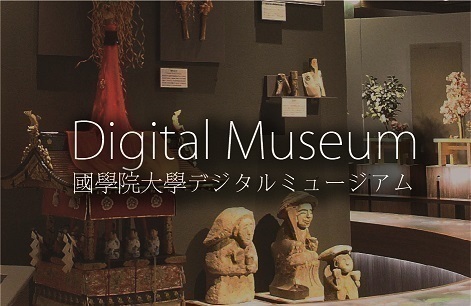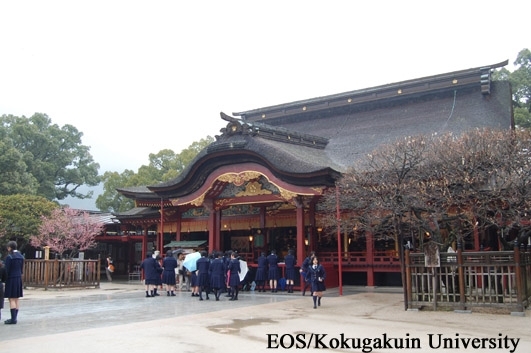- トップ
- Encyclopedia of Shinto
- Tenjin Shinkō
Encyclopedia of Shinto
| Main Menu: | |
| Links: |
詳細表示 (Complete Article)
| カテゴリー1: | 6. Belief and Practice |
|---|---|
| カテゴリー2: | Shrines and Cultic Practices |
| Title | Tenjin Shinkō |
| Text | The worship of Sugawara Michizane (845-903) as Tenma Tenjin. The use of the term "tenjin" however, predates the ninth century. In ancient China the expression "heavenly deities and earthly deities" (Tenjin chigi" 天神地祇) existed and subsequently in Japan the same characters were applied to the words "Amatsukami" and "Kunitsukami". (These names also mean heavenly kami and land kami, but have different meaning from the Chinese usage.) The Kanmu Emperor "worshipped the tenjin at Katano," and when envoys were sent to T'ang Dynasty China (kentōshi), prayers were made to the tenjin chigi for their safe journey. Tenjin were also worshipped in other regions in Japan besides the capital. All of these instances pre-date Sugawa Michizane's deification as Tenjin and even now at the shrine Kita-Shirakawa Gūsha venerates Tenjin as a deity of thunder and rain. However any mention of Tenjin belief is generally seen as a reference to the cult of Sugawara no Michizane after he acquired the characteristics of the conflated deity Tenman Tenjin. Michizane was involved in the editing of Sandai jitsuroku and Ruiju kokushi, the author of Kanke bunso and was perhaps the outstanding academic and poet of his age. In 901, during the reign of Emperor Daigo, Michizane was demoted from Minister of the Right to Vice Governor-General at Dazaifu (Dazai no gon no sochi). Dazaifu was the government headquarters in Kyūshū. After two years and much misfortune, he died there. After his death, all manner of social unrest was reported in the capital and rumors spread that they were caused by Michizane's spirit. The decisive moment was in 923 with the death of Crown Prince Yasuakira at the age of 21. It was said that "Everyone was saying this was the deed of the resentful spirit of Michizane" (Nihon kiryaku). In response, the imperial court posthumously restored Michizane's court office and he was posthumously awarded the rank of shōnii. He we see the de facto recognition by the court of the power of Michizane's resentful spirit(goryō ). The ringleader of the plot to oust Michizane from the court, Fujiwara no Tokihira, had already died in 909. In 925 Crown Prince Yoshiyori died young and then in 930, a bolt of lightening struck the imperial palace, an event which had a profound effect on Emperor Daigo's physical and emotional state. Against this background, through the use of oracles (takusen), there was a growth of commoner religious practitioners referring to Michizane's spiritual power as that of "Tenjin". According to the "Kitano Tenman Jizai Tenjingu sōken Yamashiro no kuni no kado no Kamutsuhayashi no gōengi", "Tenmangu takusen ki" and "Saichin kimon", the medium Tajihi no Ayako first received an oracle from Tenjin in her own home in the Ukyo quarter of Heian-kyo in 942; she kept a shrine (hokora) there for some 5 years before moving to the site of the present Kitano shrine in 947. Also in the same year, in a separate movement to that of Ayako, Taromaru, son of the priest (Negi) Miwa no Yoshitane at the shrine Hiragū in Omi, received an oracle from Tenjin. These sources and legends relate the origins of the shrine Kitano-Tenmangū. Tenjin had in fact been venerated at Kitano prior to this time, but accompanying the above movements and the syncretic combination with Buddhist thought, Michazane's spirit was deified under the name Tenjin. The kami Tenman Daijizai Tenjin is a combination of the tenjin "thunder deity" (raijin) who rules the weather, Michizane's "vengeful spirit" (goryō ), a Chinese deity for whom oxen were killed and offered, the esoteric Buddhist (Mikkyō) "Dharma protector deity" (gohōjin), and the mythological Amatsukami (Tenjin). The Tōken shōnin Meidoki (cited in Fusō ryakki) describes how Michizane as the deity Dajo Itokuten, with his 168,000 disciples, takes Emperor Daigo's life and subjects him to all manner of tortures in hell. Meanwhile, near Dazaifu where Michizane died, Umazake no Yasuyuki constructed a mausoleum for Michizane as early as 905. This became the Anrakuji Buddhist temple, and was the model for the present day shrine Dazaifu Tenmangū. After that there were numerous reports of oracles descending from Tenjin and they began to have a steady effect on the imperial court. However, in the background are complicated links with the power disputes at the court between the Fujiwara and the Sugawara. Nonetheless, during this period, Michizane had his court rank posthumously elevated again to Shōichii Daijyō Daijin (Prime Minister), his divine status as Tenjin was officially recognised and he ceased to be a vengeful spirit (goryō ) and metamorphosed into a state- protector deity. The early Kamakura text "Kitano Tenman engi" is a collection of legends and stories relating to Michizane as the Tenman Tenjin deity all emphasise the Tendai Buddhist power of the Dharma and of practice. Subsequently in the middle ages, Tenjin belief showed a tendency to fragment into certain distinct ‘functional kami'. These functions mostly relate to anecdotes about Michizane from both before and after his death, showing much variety. These include clearing the falsely accused; sincerity and filial piety; protecting the state; guardian of the soul in re-birth; and relating to poetry and calligraphy. Moreover, under the influence of Zen Buddhism, there were legends of Tenjin's travels to T'ang China and he was represented in Zen painting by a plum. Tenjin had special importance in waka poetry and the linked verse known as renga and in the Muromachi period Tenjin was regarded as one of the three waka deities. In the Edo period, Tenjin appeared as the kami of temple schools (terakoya) in jōruri puppet plays as "Sugawara denju tenarai kagami" and popular belief in Tenjin spread far and wide. In the present day, Tenjin is worshipped as the kami of learning and examinations. There are more than 10,000 shrines nation wide dedicated to him as either Tenjin or as Sugawara no Michizane. The Tenjin festival in Osaka is counted as one of the three great festivals in contemporary Japan. — Yonei Teruyoshi |





